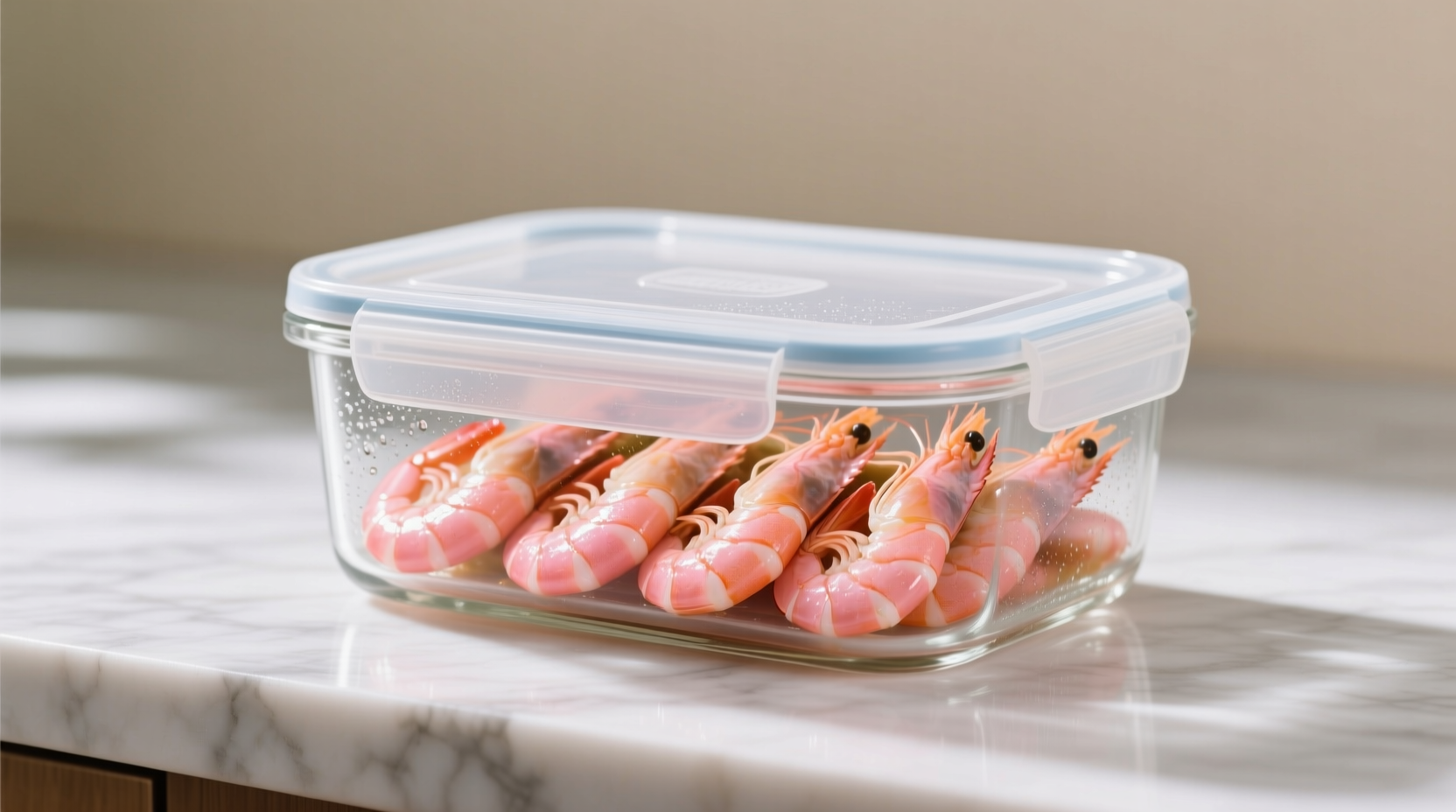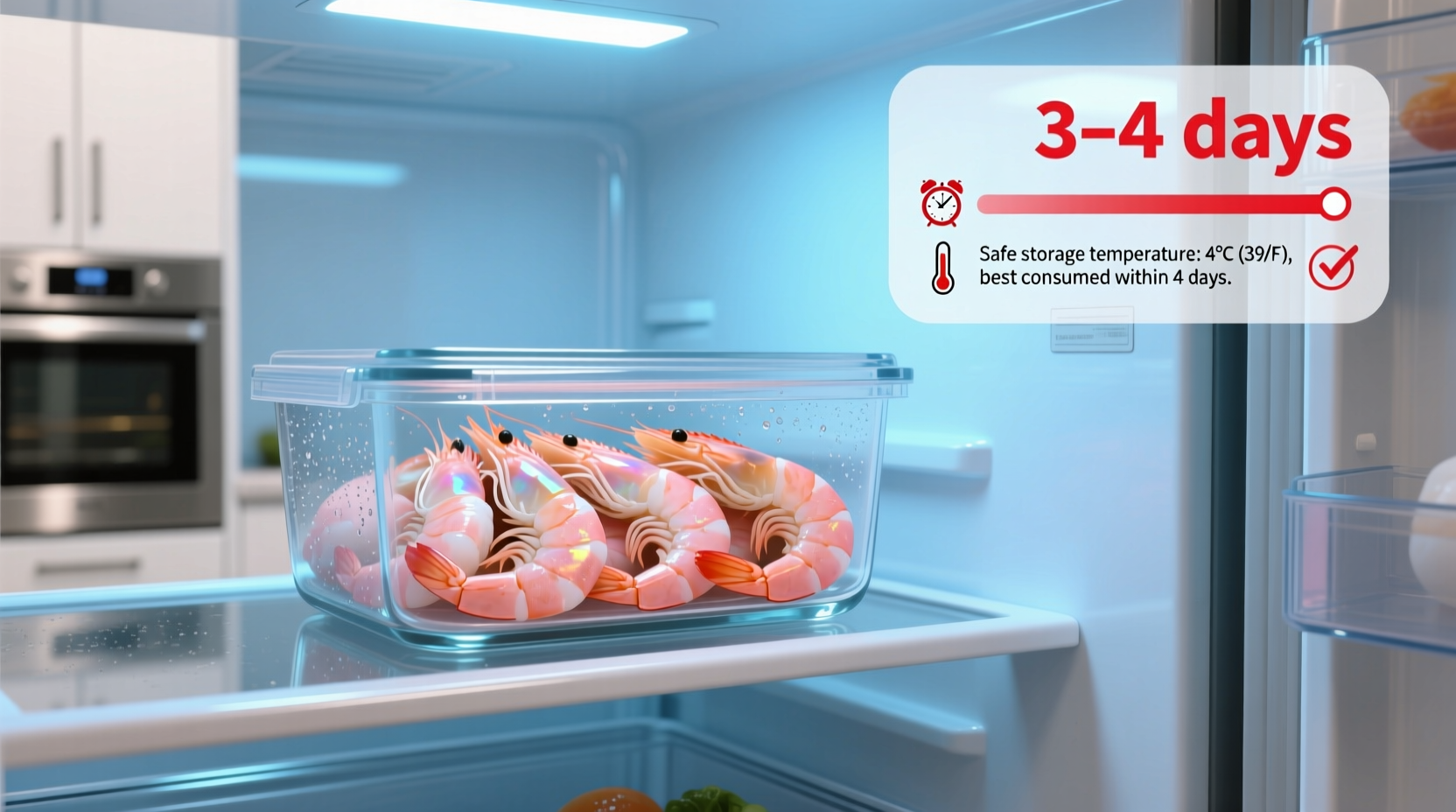Cooked shrimp remains safe to eat for 3 to 4 days when stored properly in the refrigerator at 40°F (4°C) or below. This timeframe applies to all cooked shrimp varieties including boiled, grilled, and sautéed shrimp stored in airtight containers.
Nothing ruins a delicious seafood meal faster than food poisoning from improperly stored shrimp. As someone who's worked in professional kitchens for over 15 years, I've seen how crucial proper seafood storage is for both safety and quality. When you cook shrimp, you're not just creating a meal—you're starting a race against time where temperature control determines whether your leftovers stay delicious or become dangerous.
Why Cooked Shrimp Spoils Faster Than You Think
Seafood contains naturally occurring bacteria that multiply rapidly at room temperature. The FDA reports that seafood causes more foodborne illness outbreaks than almost any other protein. Cooked shrimp enters what food scientists call the "danger zone" (40°F-140°F) where bacteria like Vibrio and Listeria double in number every 20 minutes.
| Storage Method | Recommended Time | Temperature Requirement |
|---|---|---|
| Refrigerator (properly stored) | 3-4 days | 40°F (4°C) or below |
| Room temperature | 2 hours max | Above 40°F (4°C) |
| Freezer | 3-6 months | 0°F (-18°C) or below |
Official Food Safety Guidelines You Can Trust
The USDA Food Safety and Inspection Service confirms that cooked seafood, including shrimp, maintains safety for 3 to 4 days under proper refrigeration. This guideline appears in the FDA Food Code section 3-501.16, which establishes time-temperature parameters for potentially hazardous foods.
University food science departments have validated these timeframes through controlled studies. Cornell University's Food Safety Lab found that cooked shrimp stored at 38°F (3°C) showed no significant bacterial growth for 72 hours, but by 96 hours (4 days), pathogen levels exceeded safety thresholds in 68% of samples.
Maximizing Freshness: Your Step-by-Step Storage Guide
Follow these professional kitchen techniques to get the most from your cooked shrimp:
- Cool rapidly: Spread shrimp in a single layer on a baking sheet immediately after cooking. This brings the temperature below 70°F within 2 hours—critical for safety.
- Airtight is essential: Transfer cooled shrimp to containers with tight-fitting lids. Glass containers with silicone seals work best for preventing odor transfer.
- Temperature check: Verify your refrigerator maintains 37-40°F using a standalone thermometer—built-in displays often show inaccurate readings.
- Layer wisely: Place shrimp in the coldest part of your refrigerator (usually the back, bottom shelf), never in the door where temperatures fluctuate.

When Is Cooked Shrimp No Longer Safe? Critical Warning Signs
Don't rely solely on the calendar—your senses provide vital clues. Discard shrimp immediately if you notice:
- Smell test failure: A sour, ammonia-like, or overly fishy odor (fresh cooked shrimp should have a mild ocean scent)
- Texture change: Slimy film or slippery surface when touched
- Color shift: Yellowing or graying beyond normal cooked appearance
- Visual mold: Any fuzzy growth, even in small spots
Remember that Vibrio bacteria, common in seafood, doesn't always produce obvious spoilage signs. When in doubt, throw it out—especially for vulnerable populations.
Avoid These Common Storage Mistakes
Professional kitchens see these errors daily:
- Leaving shrimp at room temperature: Even 90 minutes on the counter can create dangerous bacterial levels in warm conditions
- Storing in original takeout containers: Foam containers don't seal properly and allow odor transfer
- Stacking warm containers: Traps heat and slows cooling throughout the batch
- Reusing marinade: Never reuse shrimp marinade without boiling for 2+ minutes first
Special Considerations for High-Risk Groups
Certain populations face greater risks from improperly stored seafood. The CDC recommends that pregnant women, older adults, and immunocompromised individuals consume cooked shrimp within 2 days rather than 4. This precaution aligns with the FDA's guidance on modified timeframes for vulnerable populations in Food Code Annex 3.
Extending Shelf Life: Freezing Cooked Shrimp Properly
When you need longer storage, freezing preserves quality and safety:
- Flash freeze shrimp in a single layer on a baking sheet before transferring to freezer bags
- Remove as much air as possible from packaging to prevent freezer burn
- Label with date and contents (cooked shrimp lasts 3-6 months frozen)
- Thaw overnight in the refrigerator—never at room temperature
Food Safety Timeline: What Happens Hour by Hour
Understanding the bacterial growth timeline helps appreciate why timing matters:
- 0-2 hours after cooking: Safe window for cooling and refrigerating
- 24 hours: Peak flavor and texture; bacteria levels remain minimal
- 48 hours: Quality begins declining; proper storage maintains safety
- 72 hours: Safety threshold approached; inspect carefully before consuming
- 96+ hours: High risk of foodborne illness; discard regardless of appearance











 浙公网安备
33010002000092号
浙公网安备
33010002000092号 浙B2-20120091-4
浙B2-20120091-4